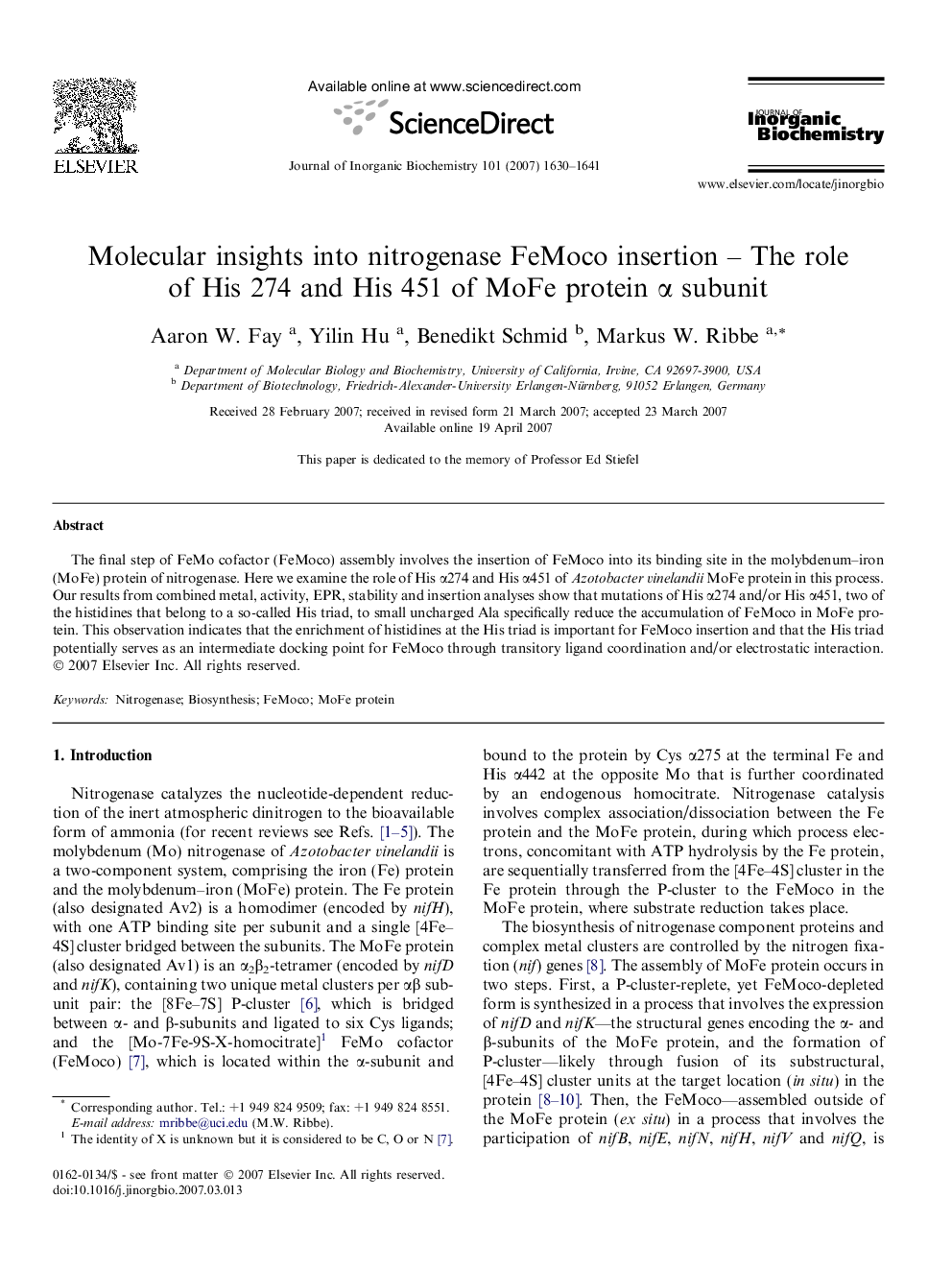| Article ID | Journal | Published Year | Pages | File Type |
|---|---|---|---|---|
| 1317067 | Journal of Inorganic Biochemistry | 2007 | 12 Pages |
The final step of FeMo cofactor (FeMoco) assembly involves the insertion of FeMoco into its binding site in the molybdenum–iron (MoFe) protein of nitrogenase. Here we examine the role of His α274 and His α451 of Azotobacter vinelandii MoFe protein in this process. Our results from combined metal, activity, EPR, stability and insertion analyses show that mutations of His α274 and/or His α451, two of the histidines that belong to a so-called His triad, to small uncharged Ala specifically reduce the accumulation of FeMoco in MoFe protein. This observation indicates that the enrichment of histidines at the His triad is important for FeMoco insertion and that the His triad potentially serves as an intermediate docking point for FeMoco through transitory ligand coordination and/or electrostatic interaction.
